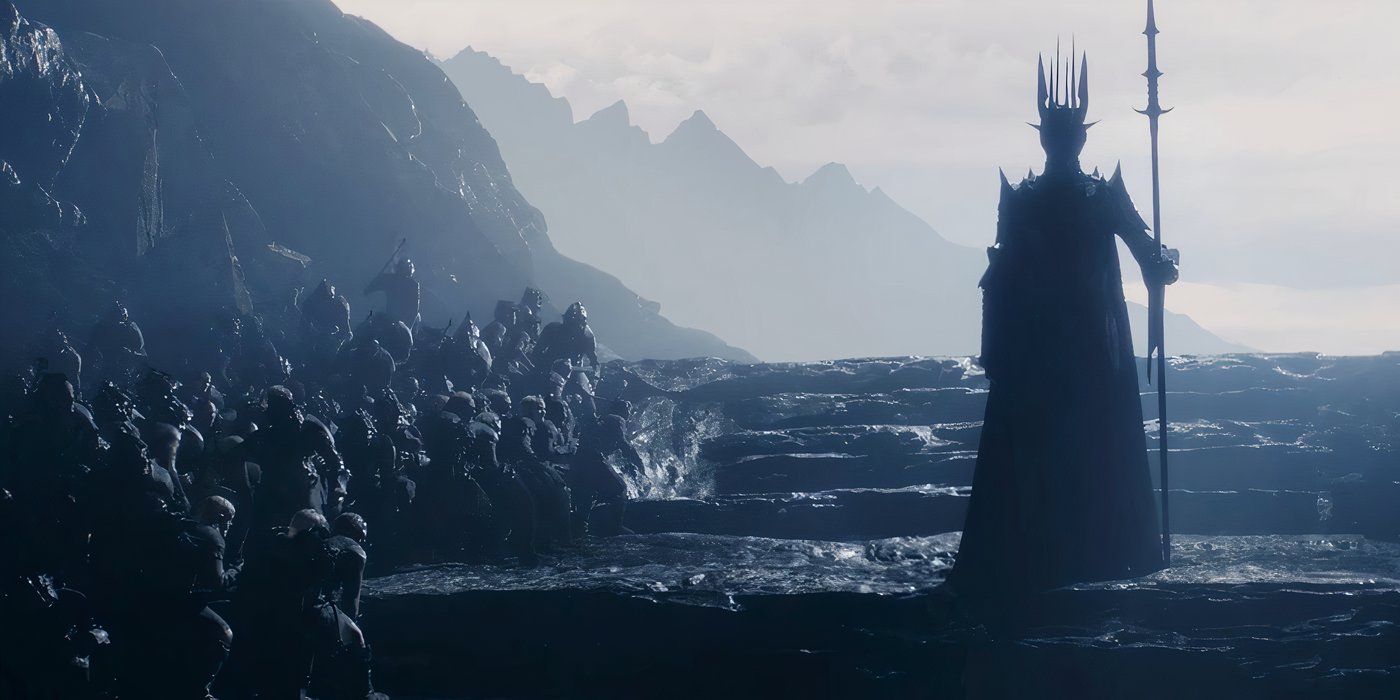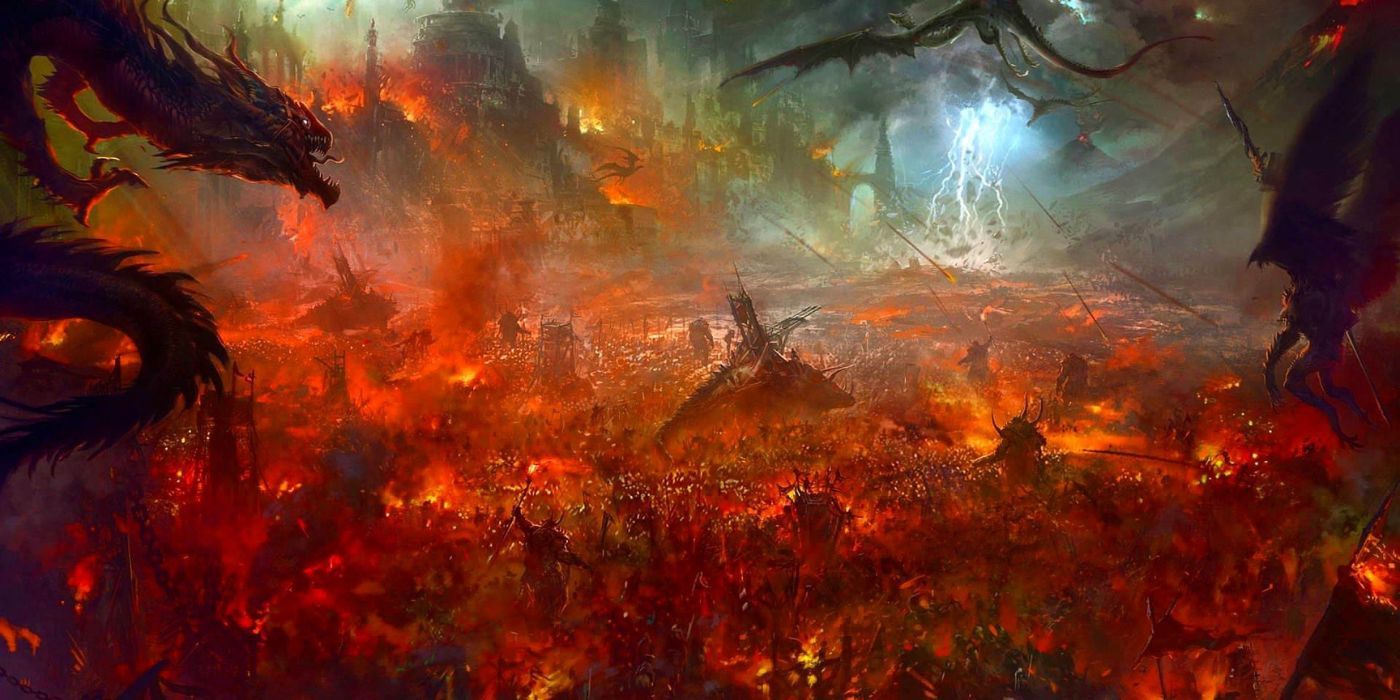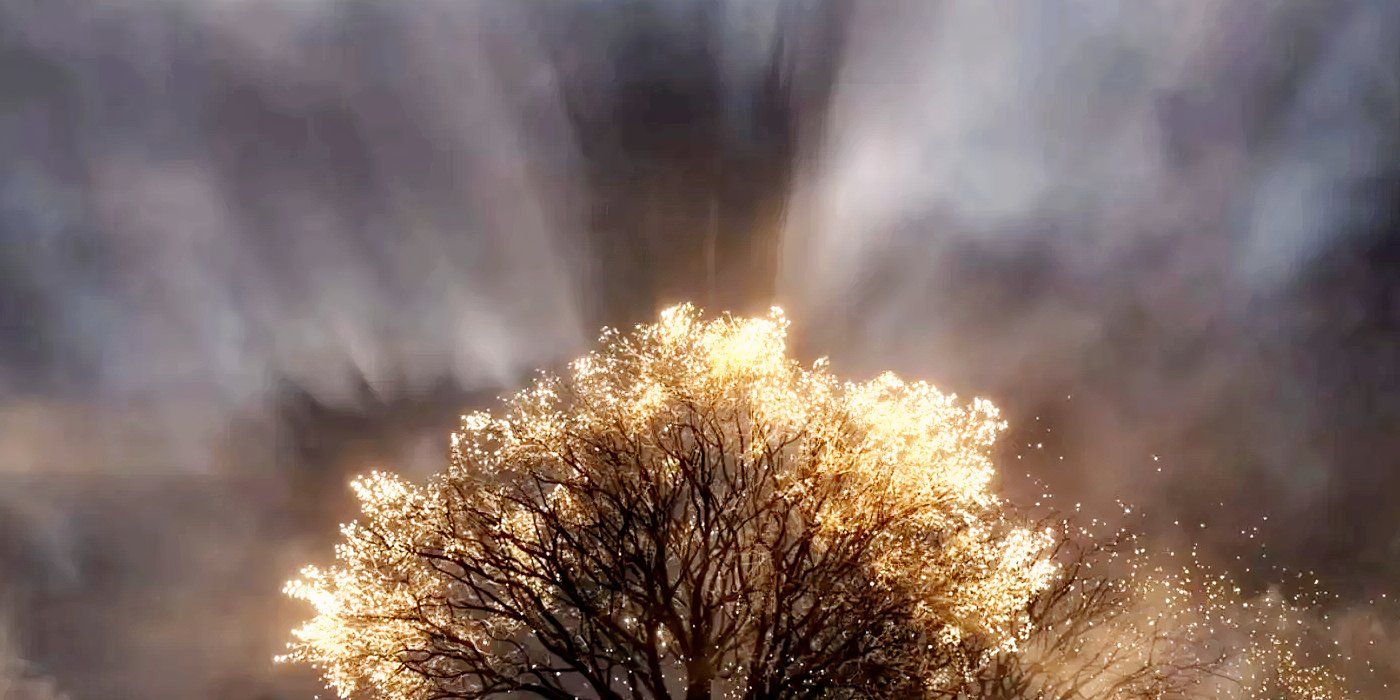The Lord of the Rings has a little-known and unfinished sequel that I think may have involved a cameo from Morgoth, or even a potentially large part. Renowned British author J.R.R. Tolkien published his magnum opus, The Lord of the Rings, in three parts between 1954 and 1955. Sauron was the eponymous Lord of the Rings in this novel and the main villain of the story. It wasn’t until the publication of The Silmarillion in 1977 that readers got to know a little more about the Ainu that may have returned in The Lord of the Rings’ incomplete sequel.
Morgoth was Sauron’s master and is LotR’s original villain, tempting Sauron to the Dark Side at the start of the world as Elves and Men knew it. The Ainur were the species that Middle-earth’s God, Eru Ilúvatar, created first of all the species. The Valar were the most powerful of the Ainur, with the Maiar below them in rank. Morgoth was a Vala while Sauron was a Maia, making Morgoth, theoretically, the much larger threat. This made his looming potential to return in Lord of the Rings’ sequel both possible and intriguing.
Tolkien’s The New Shadow Would’ve Involved Men With Satanistic Beliefs
The Lord Of The Rings Sequel Included A Shadowy Cult
Morgoth’s defeat in The Lord of the Rings legendarium came in the War of Wrath, but Morgoth still could have returned in The Lord of the Rings sequel via the satanic cult Tolkien mentioned. J.R.R. Tolkien called his Lord of the Rings sequel The New Shadow, and it involved a dark and festering underbelly in Gondorian society, at the heart of which was a “Satanistic religion” (The Letters of J.R.R. Tolkien). Provided in The Letters of J.R.R. Tolkien, a letter written by Tolkien in 1964 described this plot and the dark cult growing in Gondor.
|
Tolkienian Age |
Event Marking The Start |
Years |
Total Length In Solar Years |
|---|---|---|---|
|
Before time |
Indeterminate |
Indeterminate |
Indeterminate |
|
Days before Days |
Ainur entered Eä |
1 – 3,500 Valian Years |
33,537 |
|
Pre-First Age Years of the Trees (Y.T.) |
Yavanna created the Two Trees |
Y.T. 1 – 1050 |
10,061 |
|
First Age (F.A.) |
Elves awoke in Cuiviénen |
Y.T. 1050 – Y.T. 1500, F.A. 1 – 590 |
4,902 |
|
Second Age (S.A.) |
War of Wrath ended |
S.A. 1 – 3441 |
3,441 |
|
Third Age (T.A.) |
Last Alliance defeated Sauron |
T.A. 1 – 3021 |
3,021 |
|
Fourth Age (Fo.A) |
Elven-rings left Middle-earth |
Fo.A 1 – unknown |
Unknown |
Tolkien described how The New Shadow was set in the Age of Men. While the War of Wrath ended in the First Age and began Lord of the Rings’ Second Age, Lord of the Rings ended with the dawn of the Fourth Age — the Age of Men. In this age, Elves, Dwarves, and the threats facing them over the last few millennia were fading. That left Men their own worst enemy, facing their own darkness through a Satanistic religion. But Morgoth represented Satan in the legendarium — first to fall, tempter, and deceiver. So, it’s likely that Morgoth was involved in this religion.
Tolkien Already Promised Morgoth’s Return Long After The Lord Of The Rings
Morgoth Was Always Destined To Come Back To Haunt Middle-earth
The biggest threat in The New Shadow may well have been Men’s own dark hearts and each other, but the incomplete novel may have eventually started exploring or setting up Morgoth’s return. If the shadow in question sprung from a Satanistic religion, and I visualize this religion worshiping Morgoth to some degree, perhaps the next step in the novel included the Dagor Dagorath. The final Battle of Beleriand, the War of Wrath, saw Morgoth’s forces beaten by one of Lord of the Rings’ toughest armies, the Host of the Valar, but this wasn’t to be Morgoth’s final end.
More can be read about Morgoth and his species in Morgoth’s Ring, published in 1993.
At the end of the War of Wrath, Morgoth was thrust through the Doors of Night into the Void, outside Middle-earth, its world (Arda), and its universe (Eä). Of all of Morgoth’s defeats in Lord of the Rings, this one seemed very final. But a prophecy said that Morgoth would break free when least expected for one last fight with LotR’s great heroes — the Dagor Dagorath. Tolkien was always reshaping this prophecy, fully intending its canonical existence. The New Shadow may have been the perfect format for him to explore it in detail.
Could Men Realistically Bring Morgoth Back To Middle-earth?
Morgoth’s Return For The Dagor Dagorath Was Mysterious
It wasn’t made clear in any versions of the Dagor Dagorath prophecy written by Tolkien exactly how Morgoth broke out of the Void, but I highly doubt Men would have helped. The “Satanistic” religion described by Tolkien in his letter was also described as secret. If Men were worshiping Morgoth, that would have been cause enough for secrecy, given Gondor’s allegiance to Lord of the Rings’ 15 Valar and Eru Ilúvatar. But if Men were trying to resurrect Morgoth for the Dagor Dagorath, that would explain the secrecy even further. This would also provide a substantial plot for the novel.
The New Shadow can be read in The Peoples of Middle-earth, published in 1996.
Men probably couldn’t bring Morgoth back from the Void because they had no way of getting to the Doors of Night, let alone opening them. Elrond’s father, Eärendil, sailed past the Doors of Night in a flying ship called Vingilot, guarding them. With the departure of Elves and their technology, Men weren’t left with any access to flying ships. Vingilot was unique, anyway. Additionally, while Men may have kept some relics of Elvish magic, they would have been woefully unequipped to open a giant, cosmic door sealed by demigods like the Ainur or Eru himself.
The New Shadow Wouldn’t Have Been A Morgoth Story
The Lord Of The Rings Sequel Likely Wouldn’t Have Spent Much Time On Morgoth
Even if Men were plotting to ᴀssist Morgoth in the Dagor Dagorath, it is unlikely that The New Shadow would have spent too long discussing Morgoth. Tolkien described a set of revolutionary plots taking place in the novel, implying that much of the story would be spent exploring Men fighting Men. Meanwhile, those descended from Aragorn would be “like Denethor or worse.” This descent into moral decay made things interesting, with no telling who readers would have sided with – Gondor’s forces or its revolutionaries. The New Shadow didn’t need a greater evil like Morgoth.
Tolkien speculated that he could have continued past the 13 pages of The New Shadow that he had written with a thriller-style novel documenting Satanistic revolutionaries plotting while children played at being Orcs. He confirmed that the plot would have eventually been overthrown. It seems likely that the novel’s protagonists would have learned that an improvement or two to their own moral judgements was necessary. Regardless, I think Morgoth would probably, at the very least, have been mentioned by name at some point in the unfinished sequel to The Lord of the Rings.








